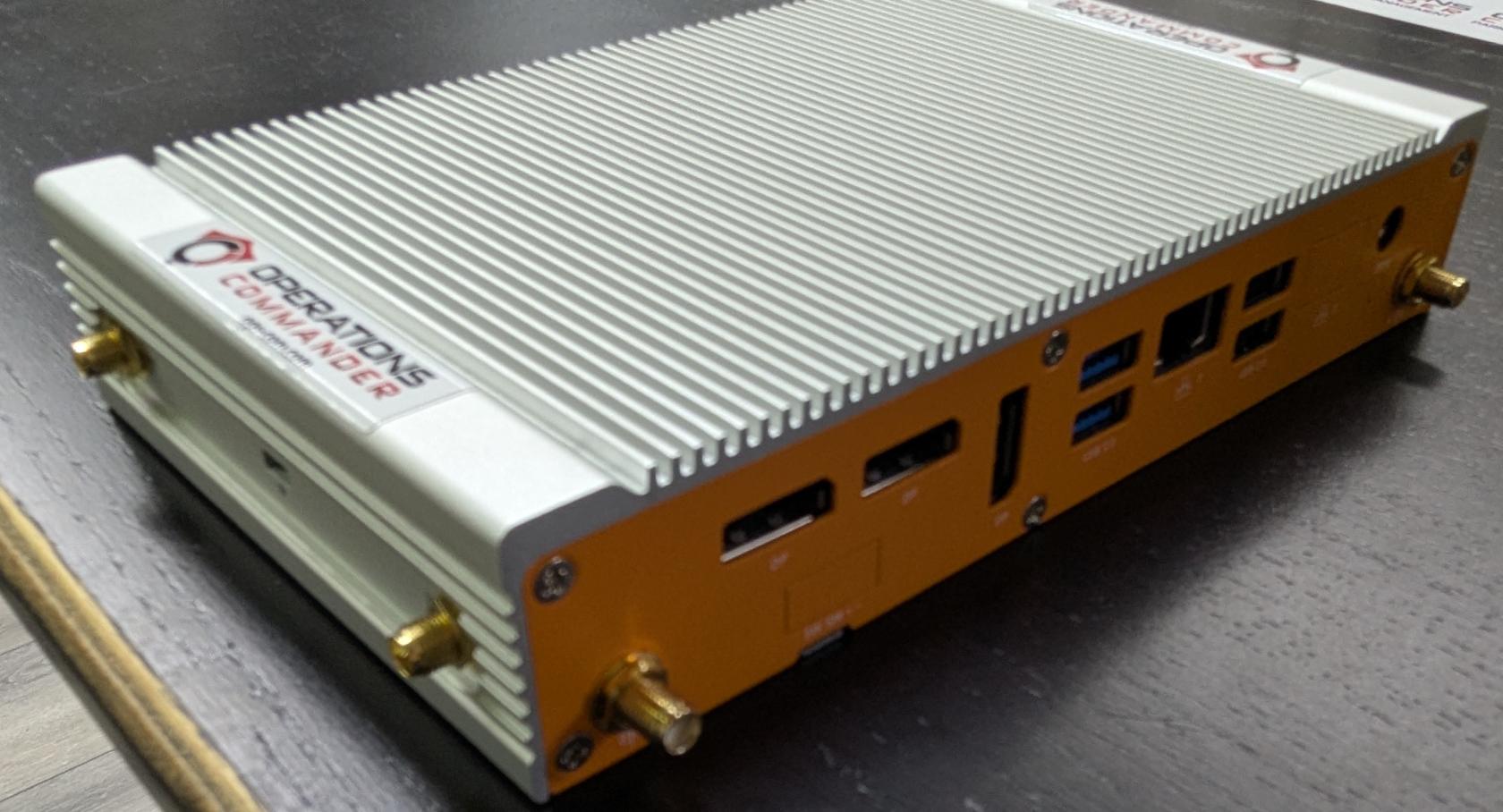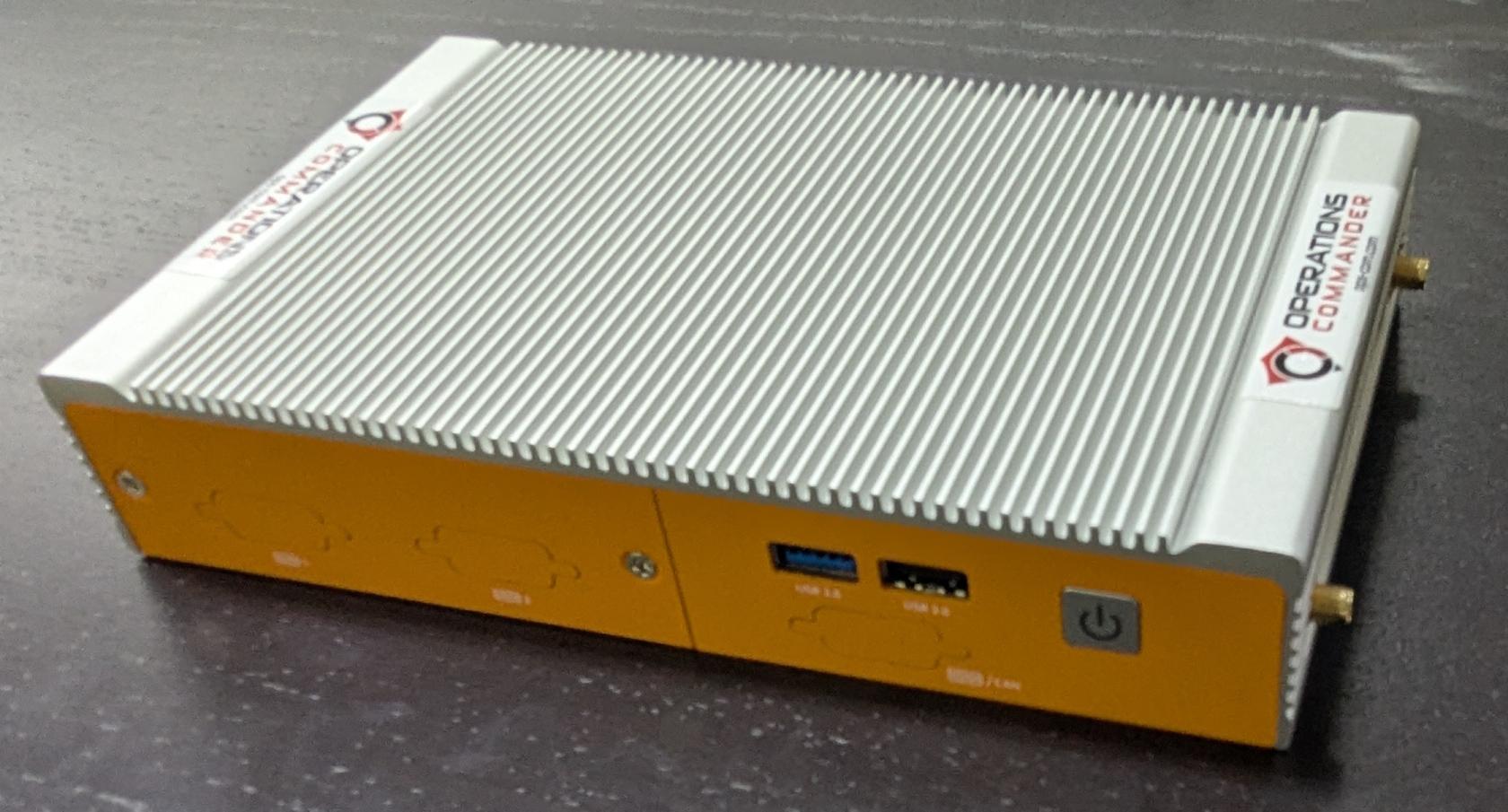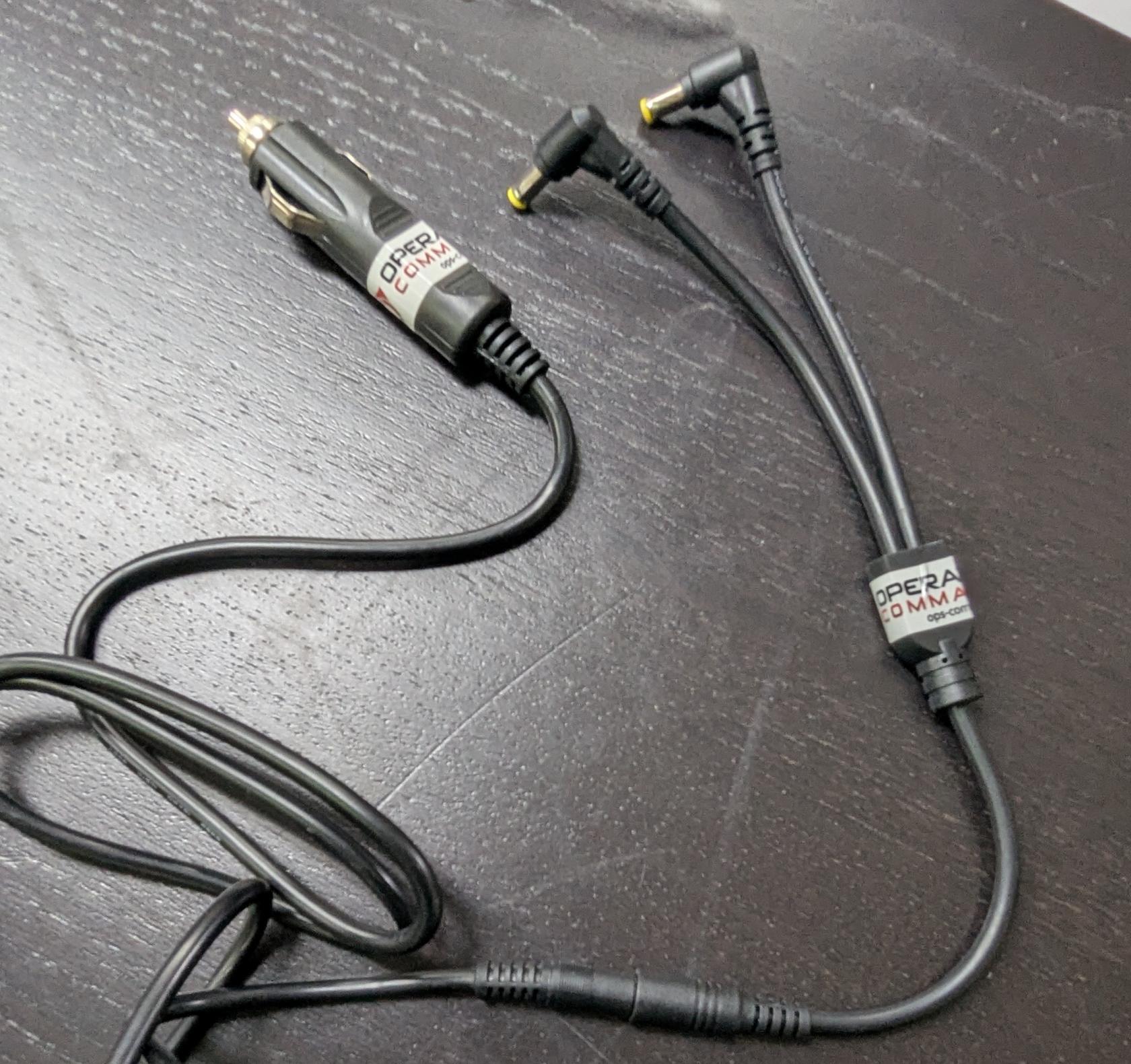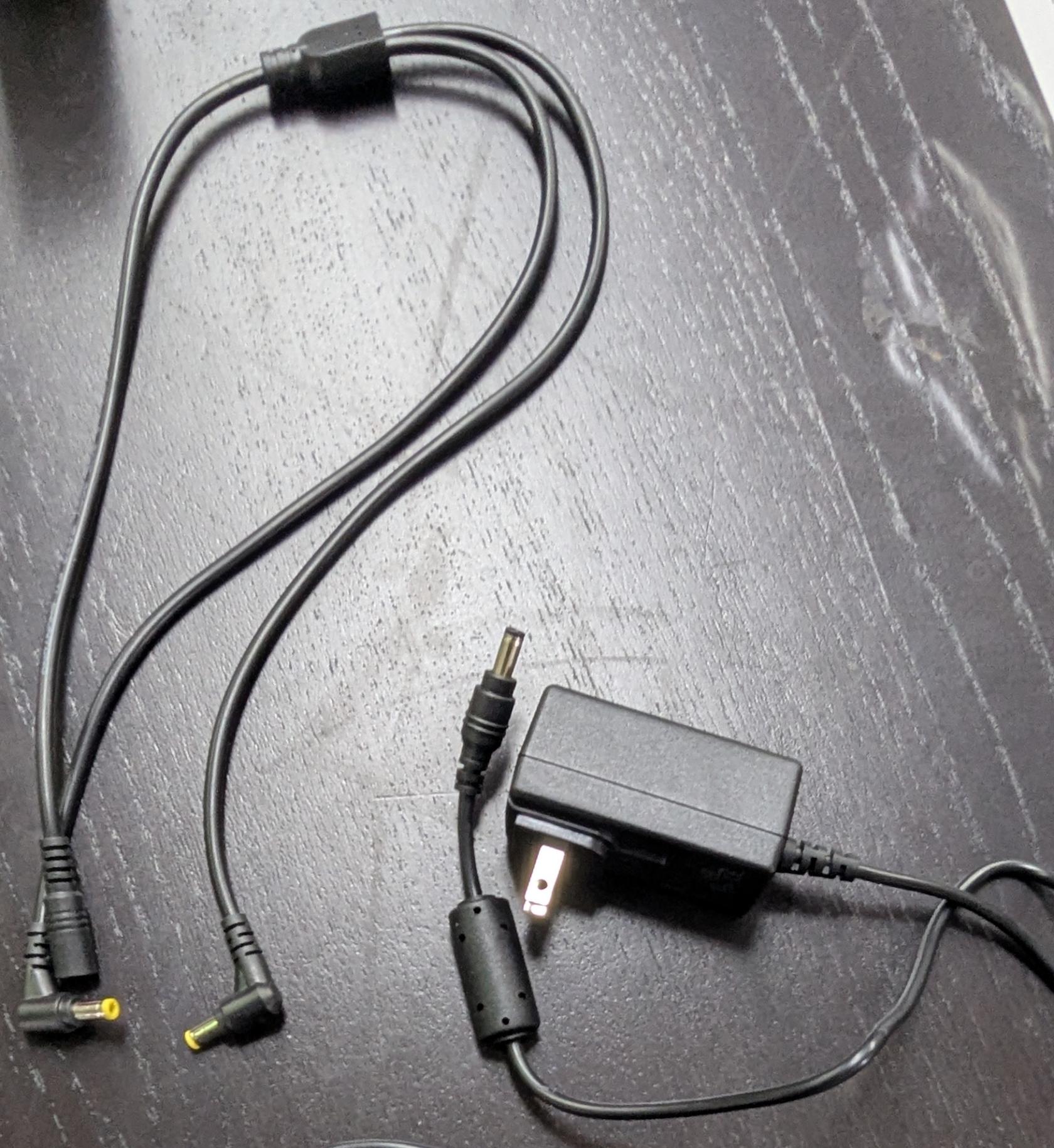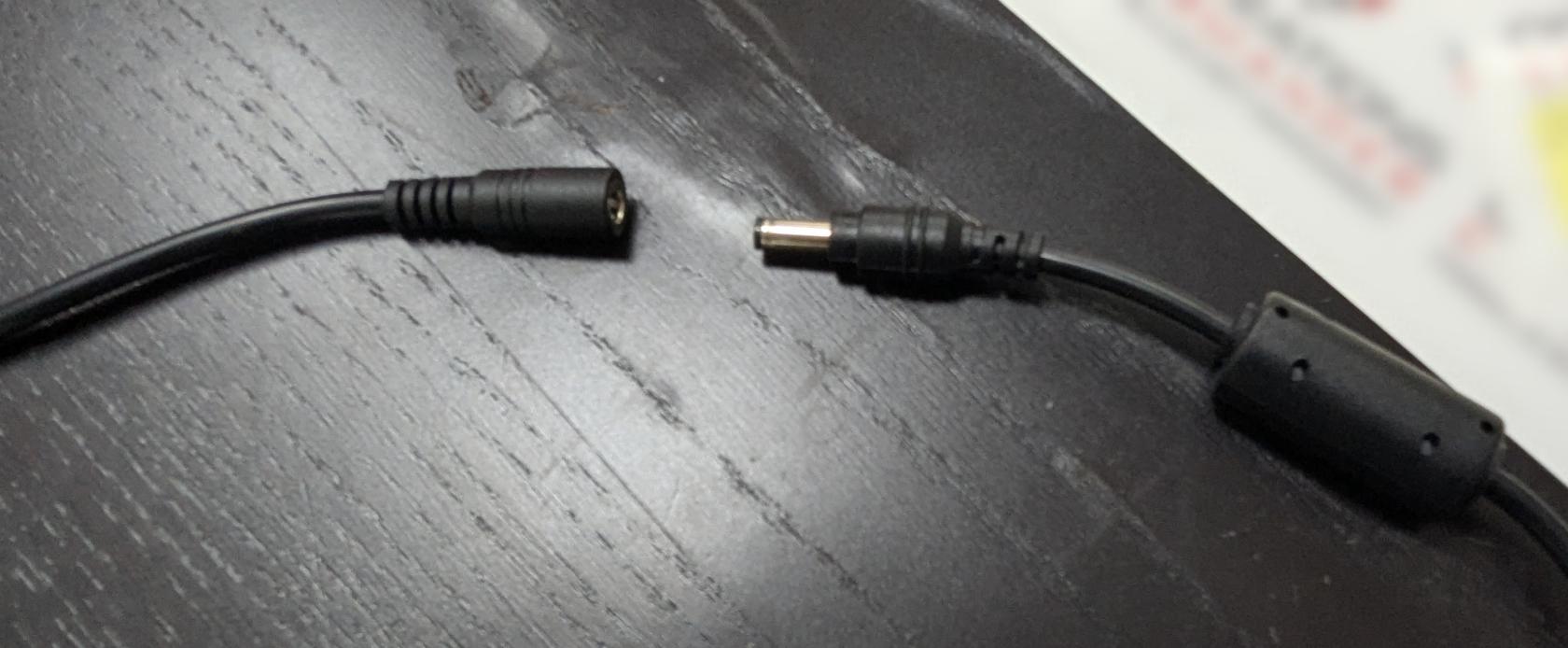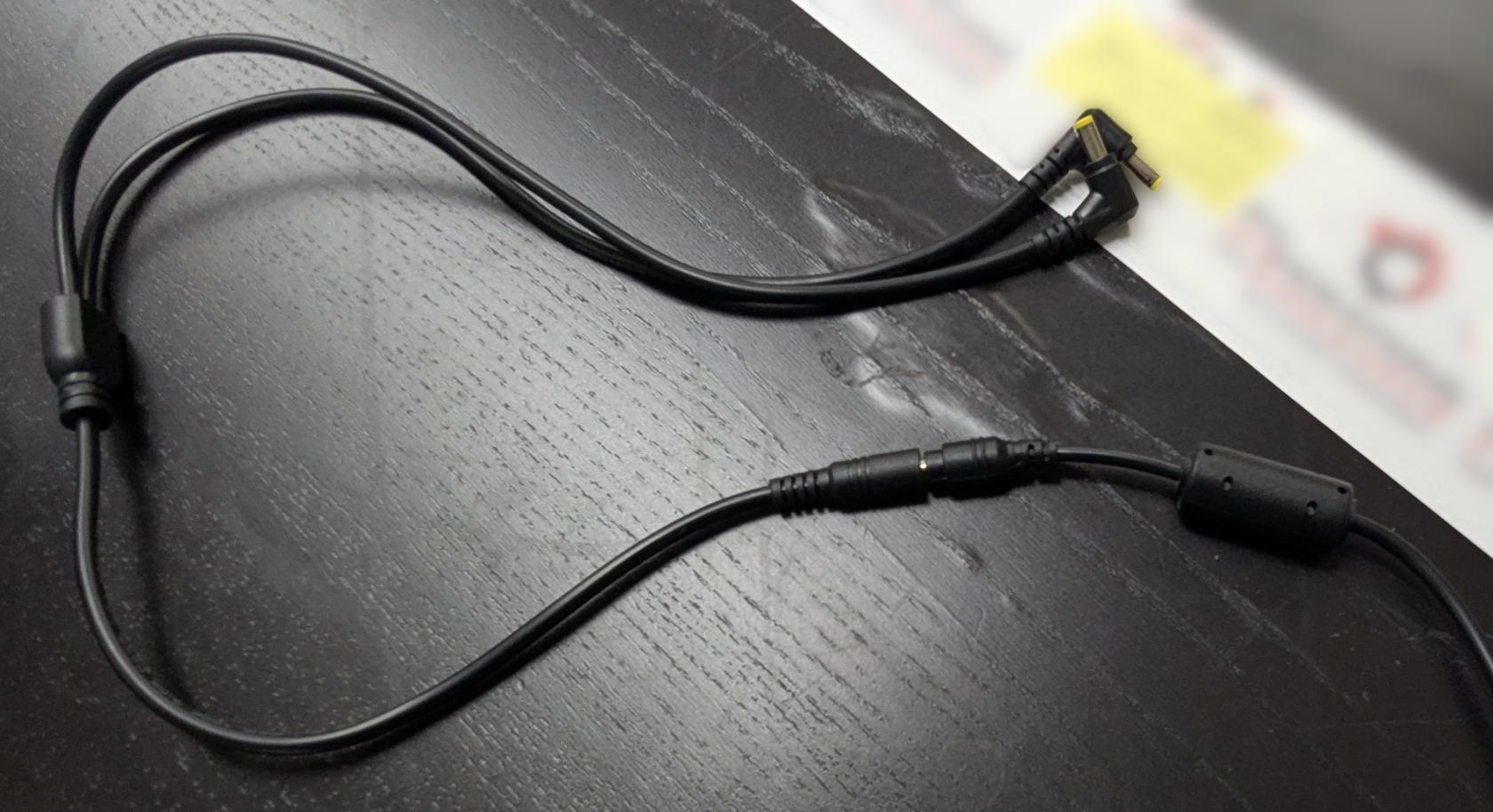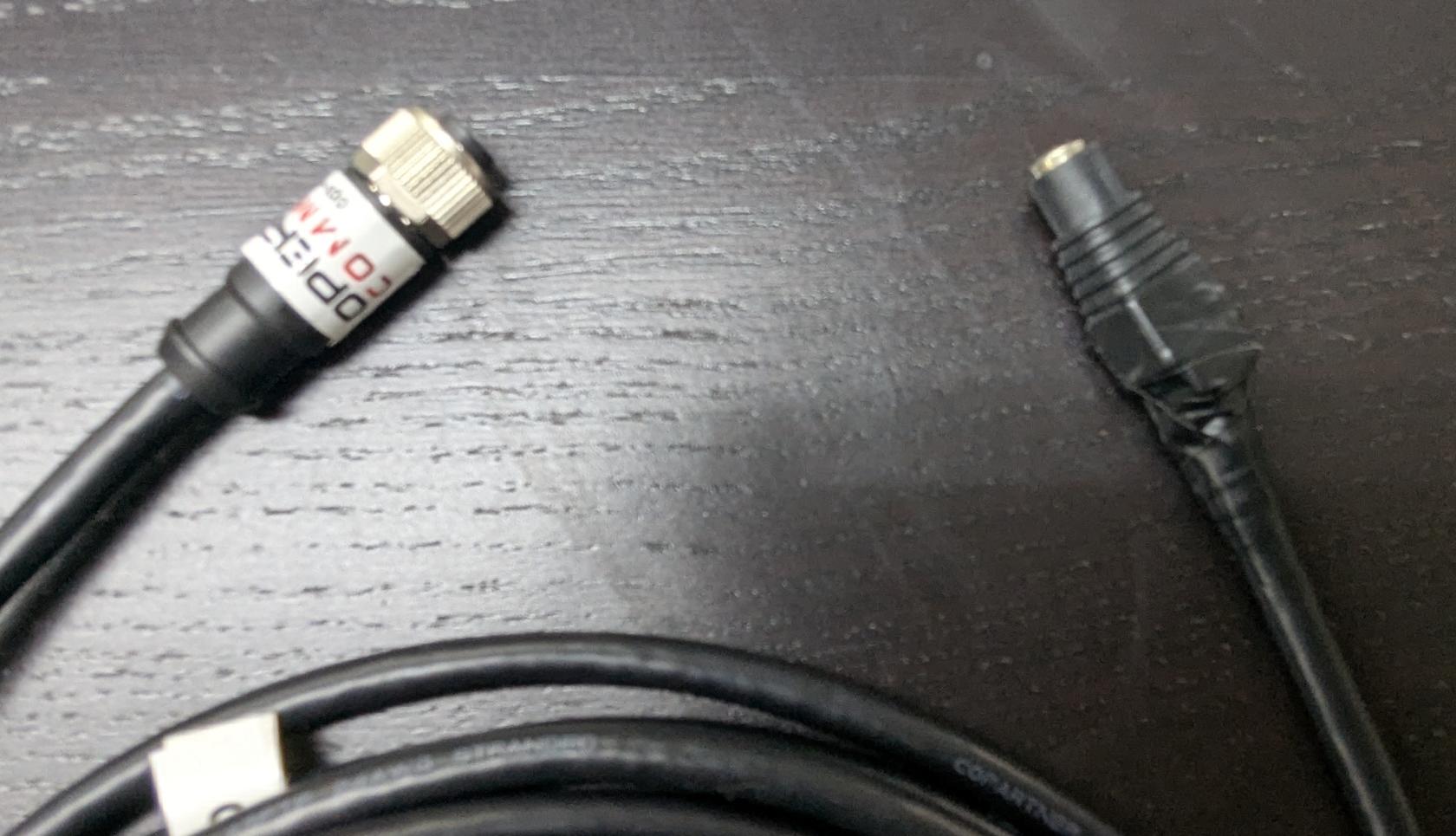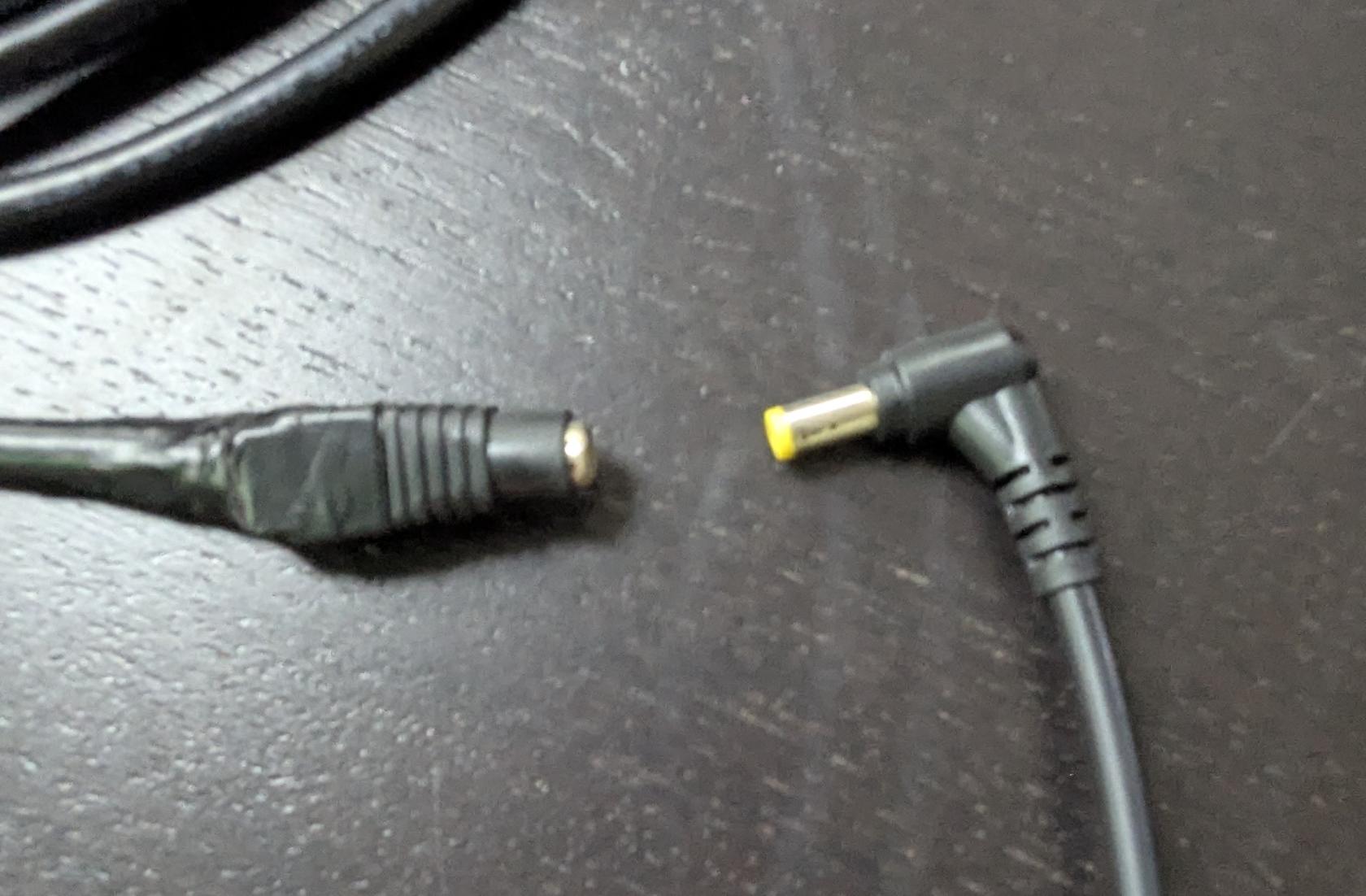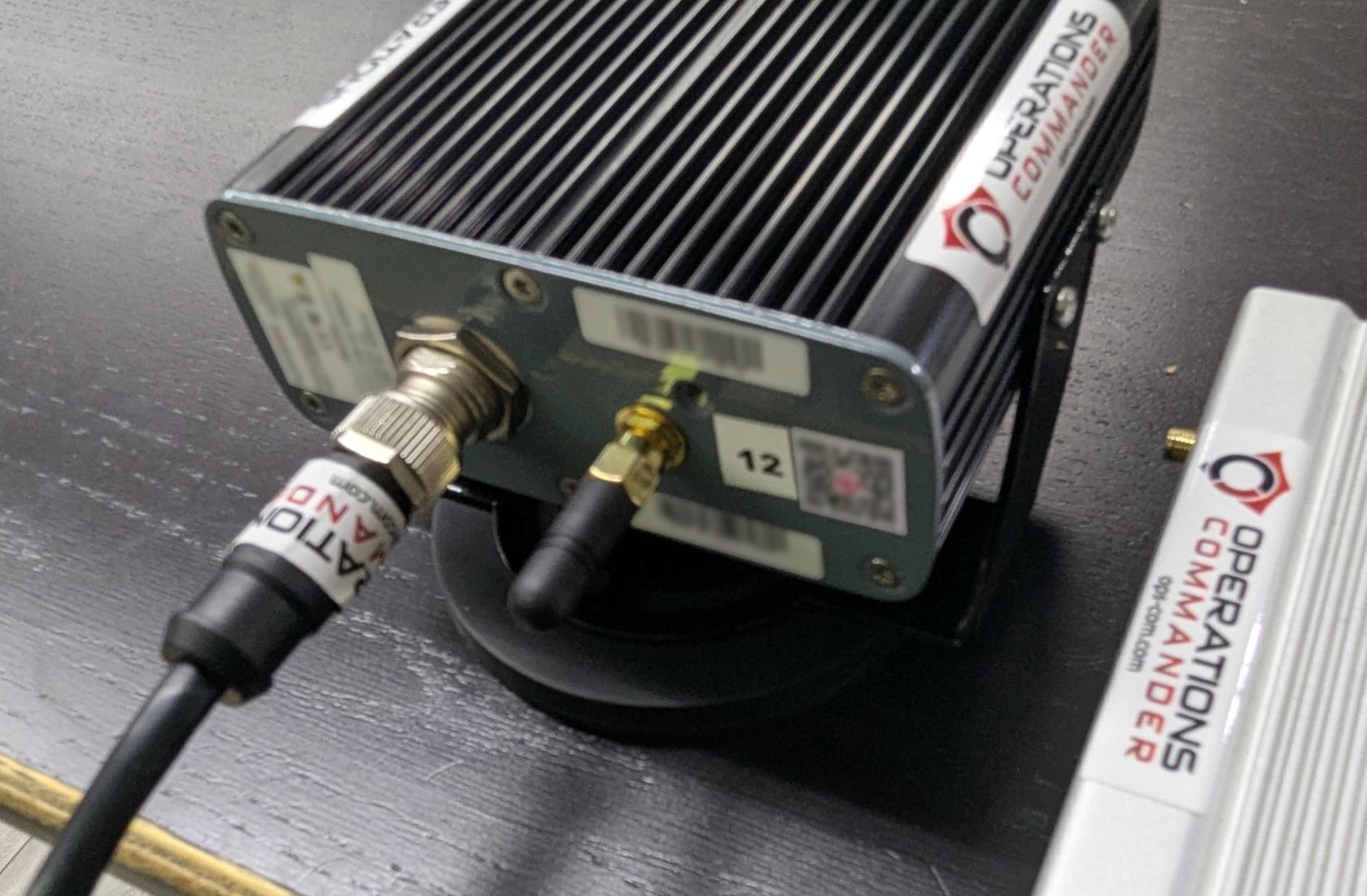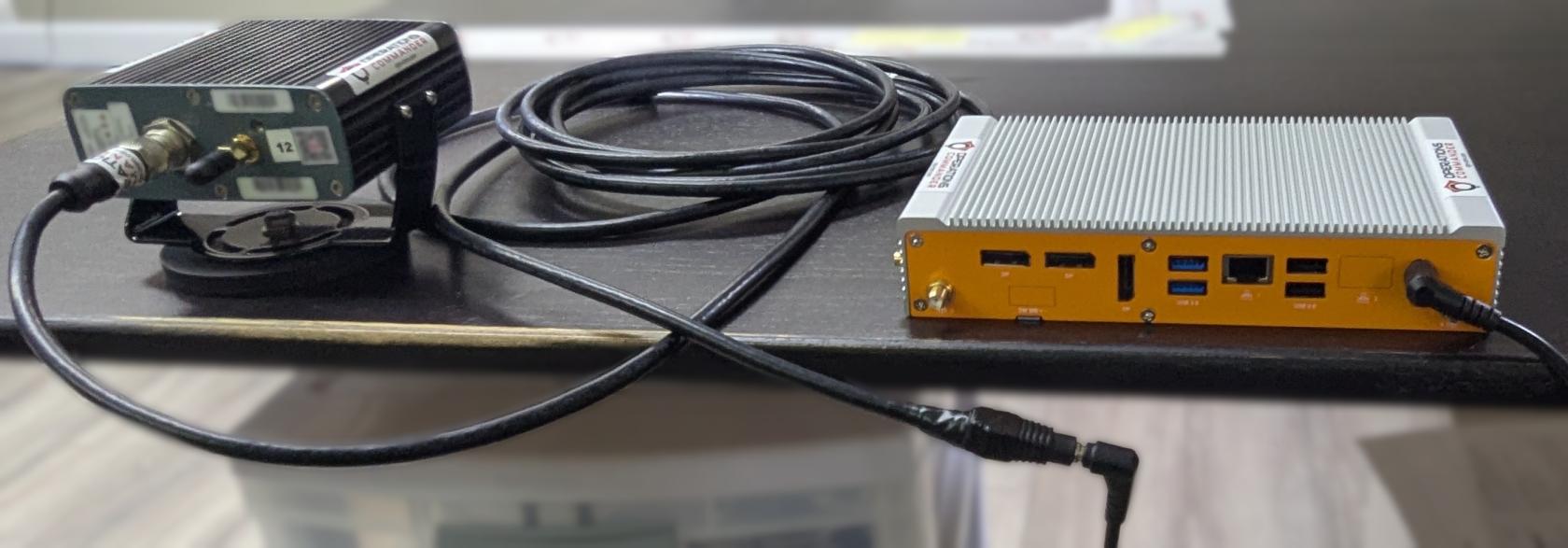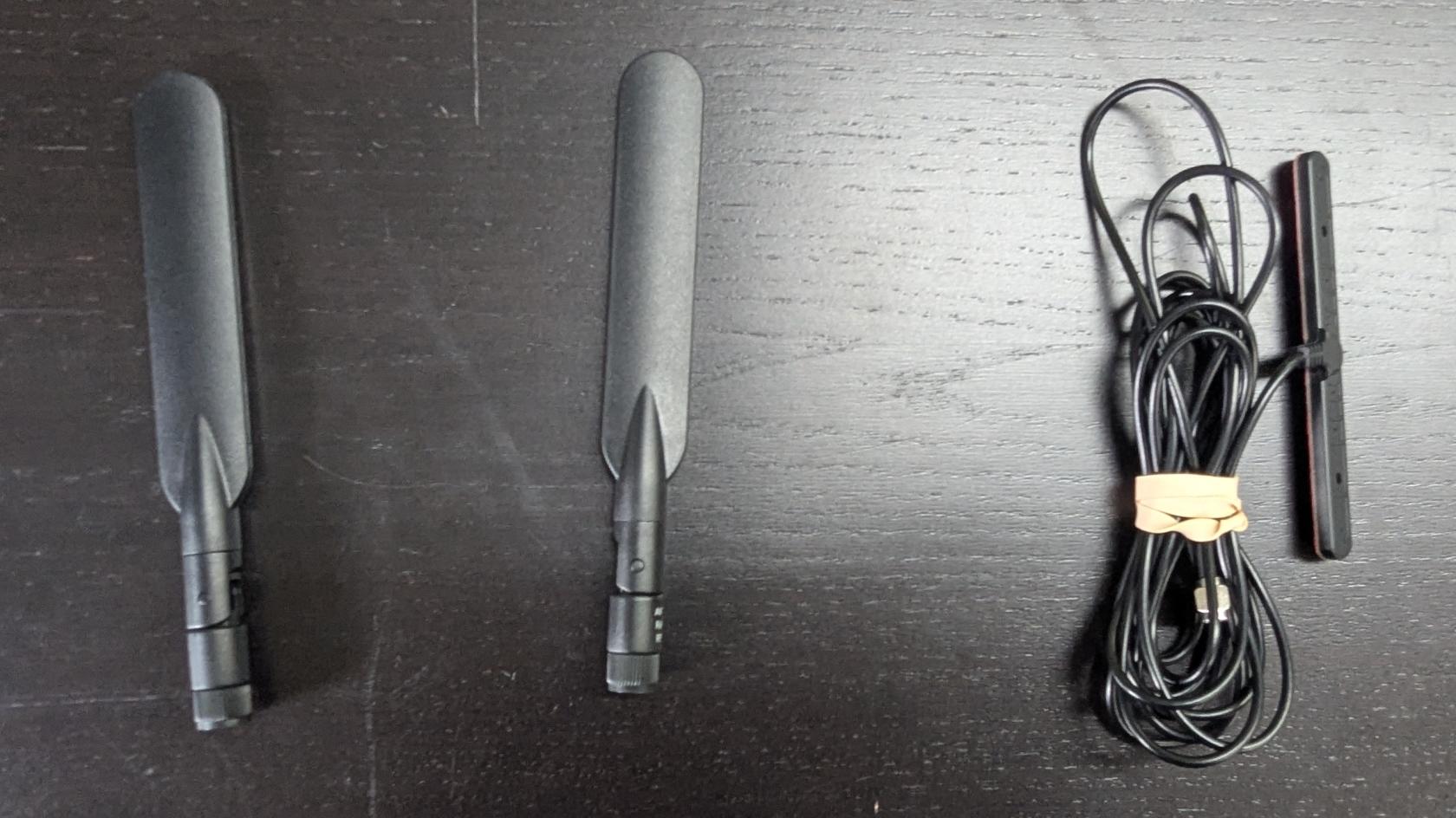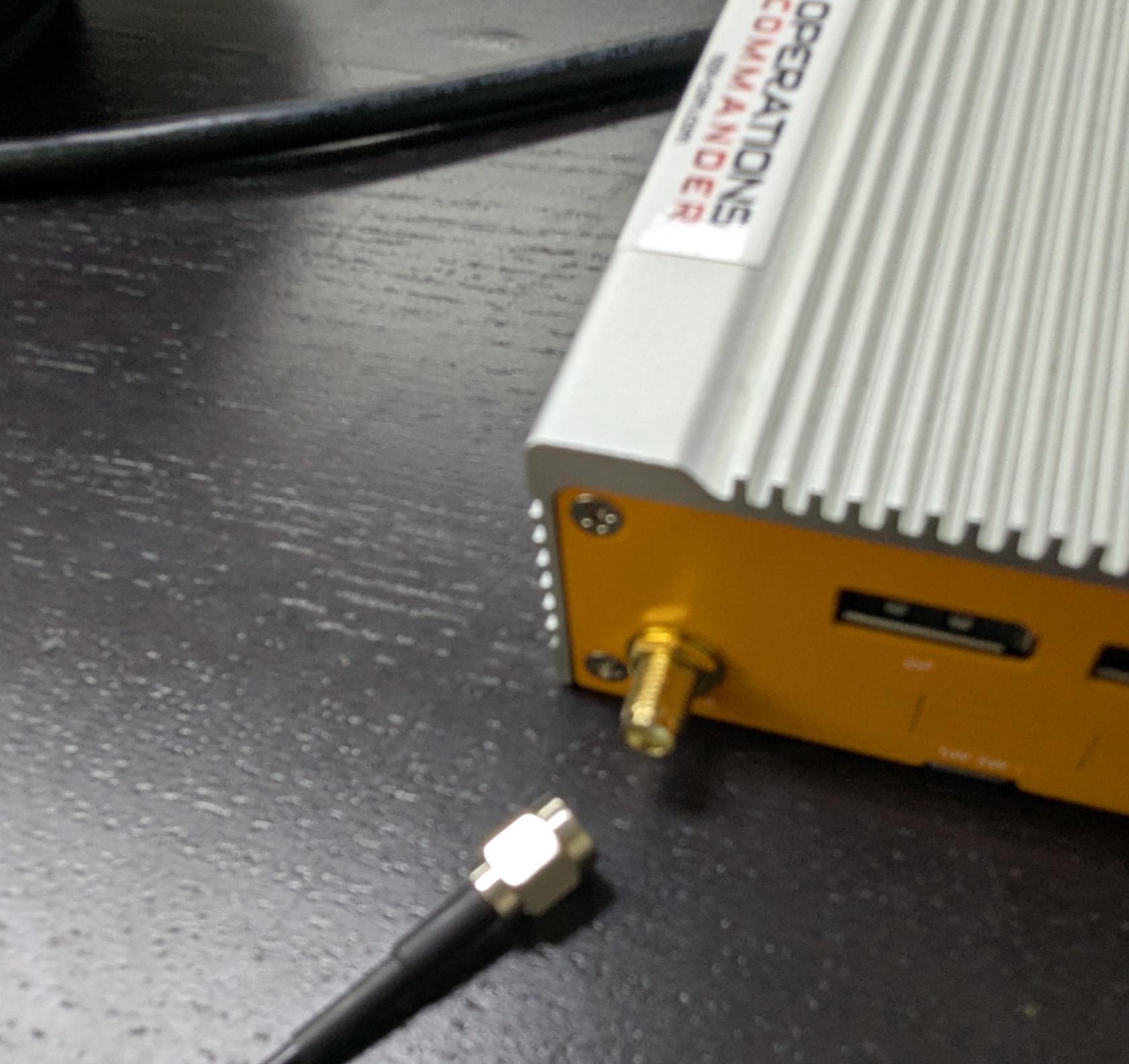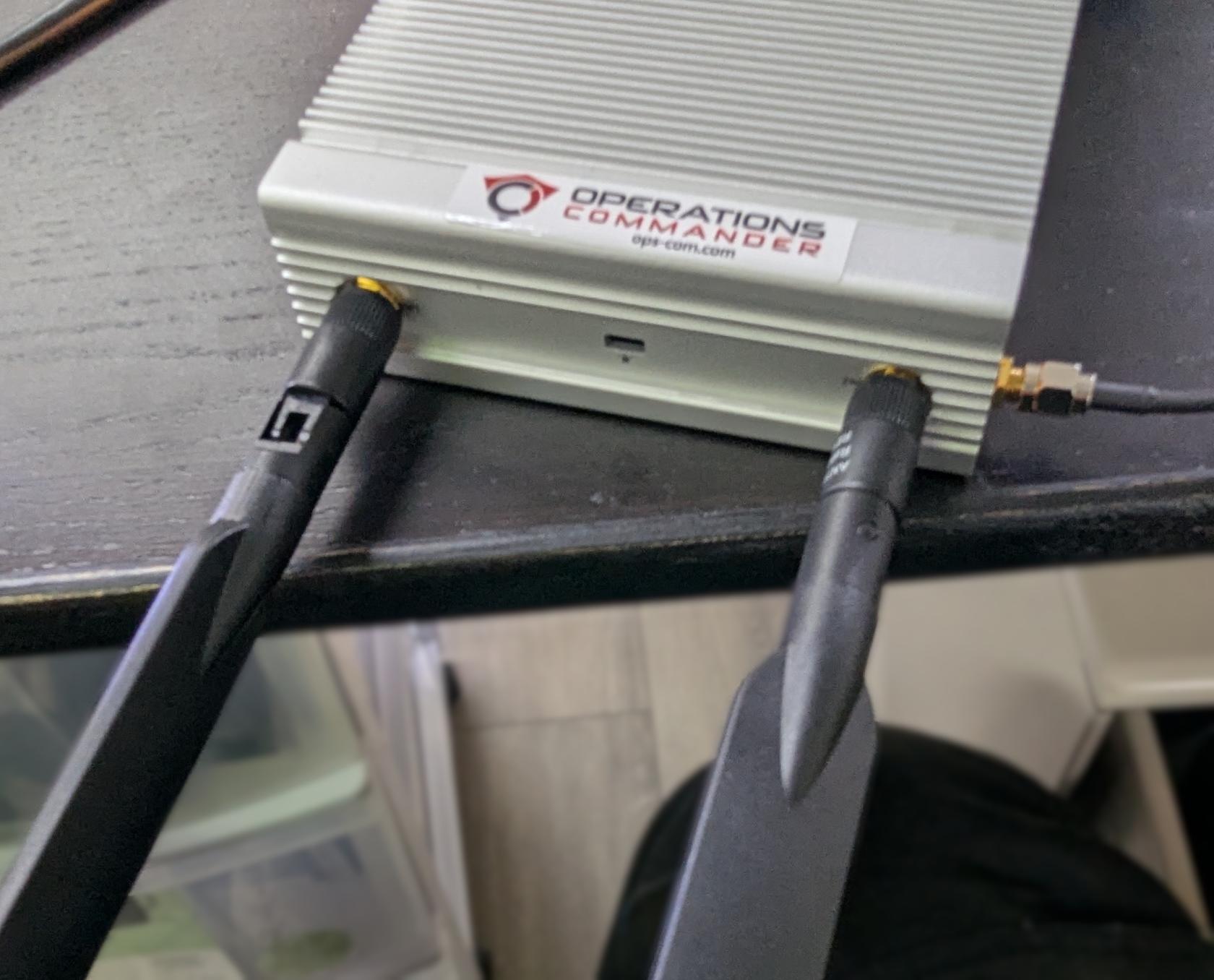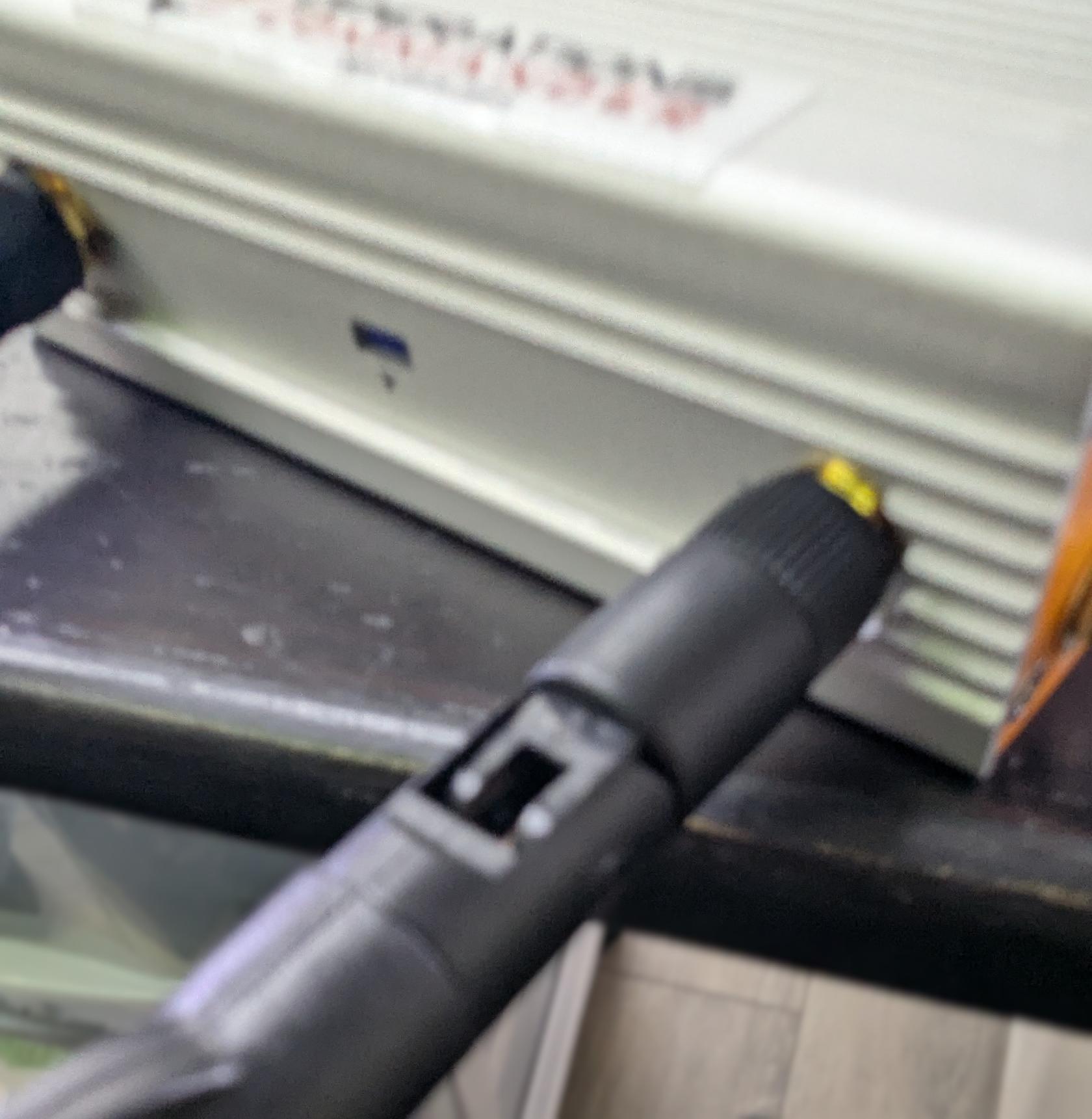Part 1: Equipment Set-Up
The PL8RDR - (license plate reader computer)
Powering the PL8RDR
There are two options for powering the PL8RDR.
- Option #1: Using the vehicle power adapter.
- Option #2: Using a wall plug.
The set-up instructions are the same between options 1 and 2. The only point of difference is whether you will draw electrical power from an automobile socket, or from a socket in the wall.
In this guide and pictured below, we are using Option #2: Using a wall plug. If you are setting this up in a vehicle, follow the exact same set-up steps but use the vehicle plug power adapter instead. The rest of the connections remain the same.
This is what you should have when you’re done:
Step-by-Step 1
The Wall Power Cord
- Connect the splitter to the rest of the power cord, as shown below:
- Plug in the other side to the wall socket or the vehicle power adapter, depending on your setup.
Next, get these 3 items ready:
- LPR power/data cord
- camera
- PL8RDR computer
Notice the two different ends on the LPR power/data cord. Pictured below:
- Connect one of the power cords to the LPR data/power cord, as shown below:
- Align pins and attach the cord to the camera, as shown below:
- Plug in the other power source into the PL8RDR. Your setup should look like the picture below:
You will know that you have succeeded once you see the camera emit a strong light.
Now you'll need to attach the antennas to the PL8RDR. This establishes a connection to the OPSCOM servers.
All antennas need to be attached as shown or the device will not function as intended.
Here are the 3 antennas that you will need, as pictured below:
- 2 x LAN Antennas
- 1 x OPSCOM Wireless Connection Antennas
- Attach the cable antennas to the port on the back left of the PL8RDR, as shown below:
- Lightly screw in the antennas on the side of the PL8RDR, as shown below.
- Make sure that the hinge is facing in the correct direction, as shown below, and gently fold the antennas into the upright position.
- Make sure to place the corded antennas in an elevated location with a good data signal to ensure proper connectivity. This is what you should have when you’re done:

